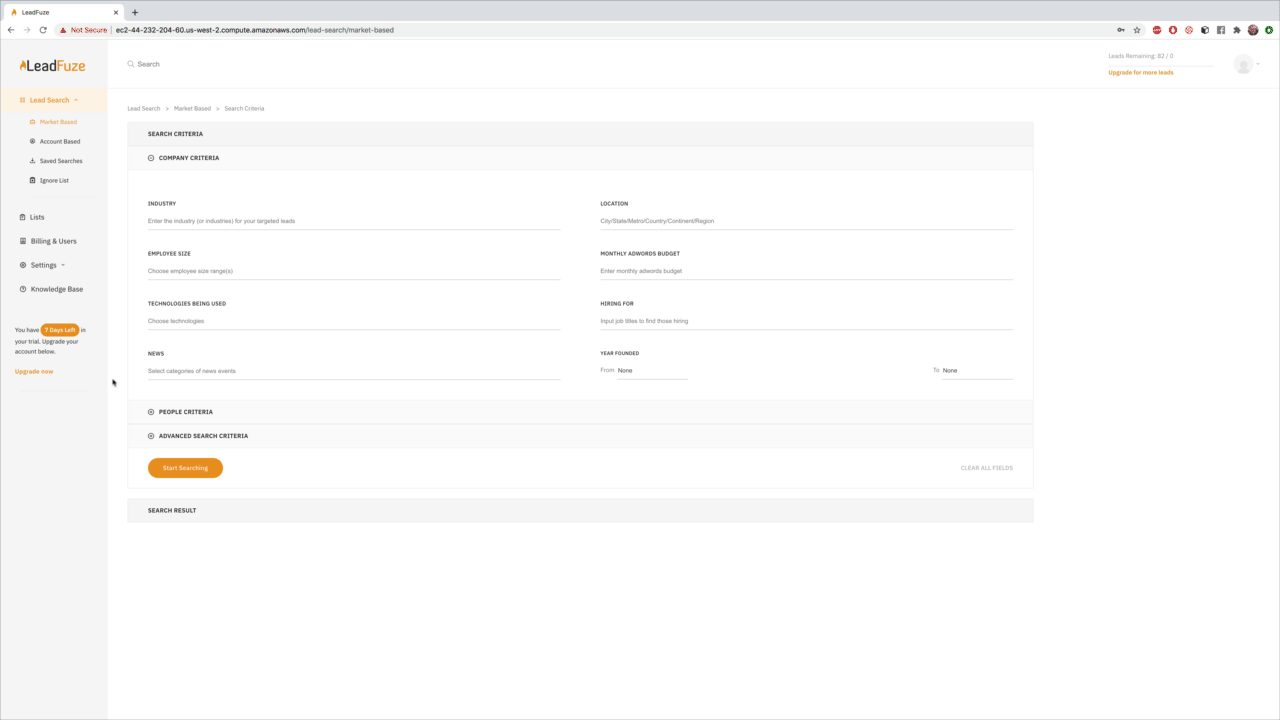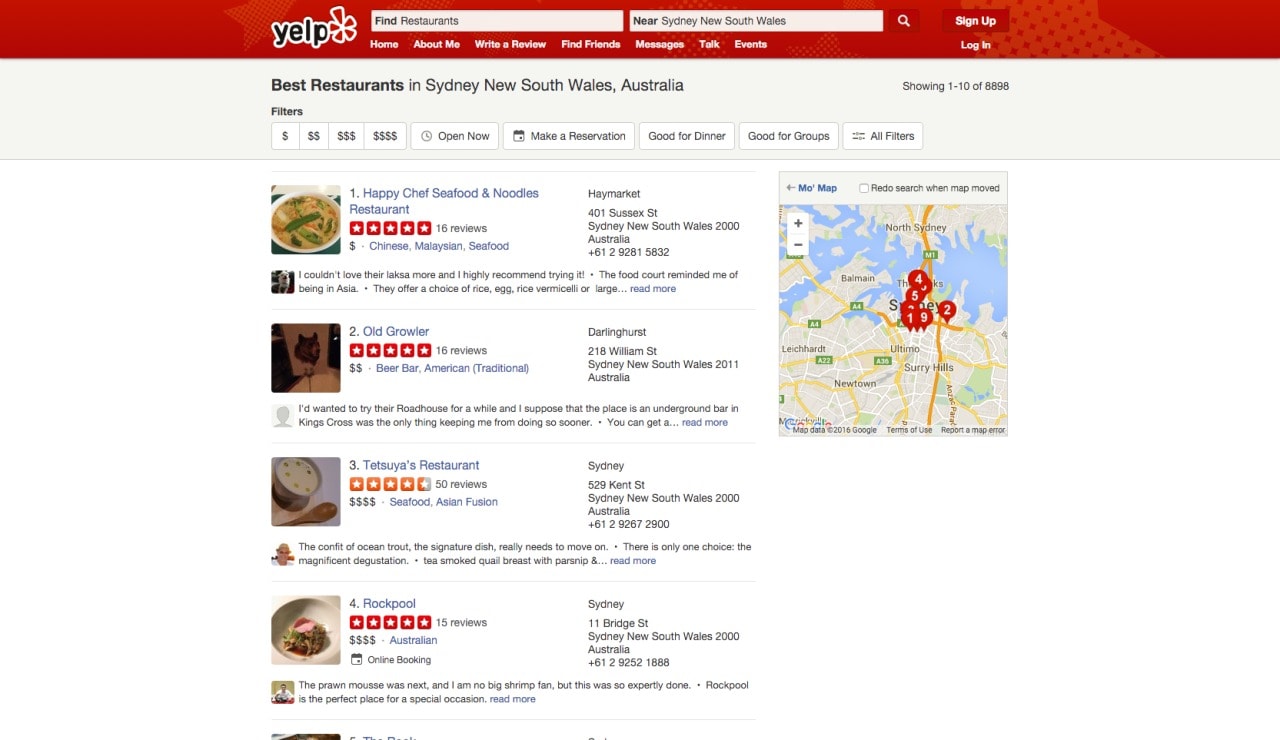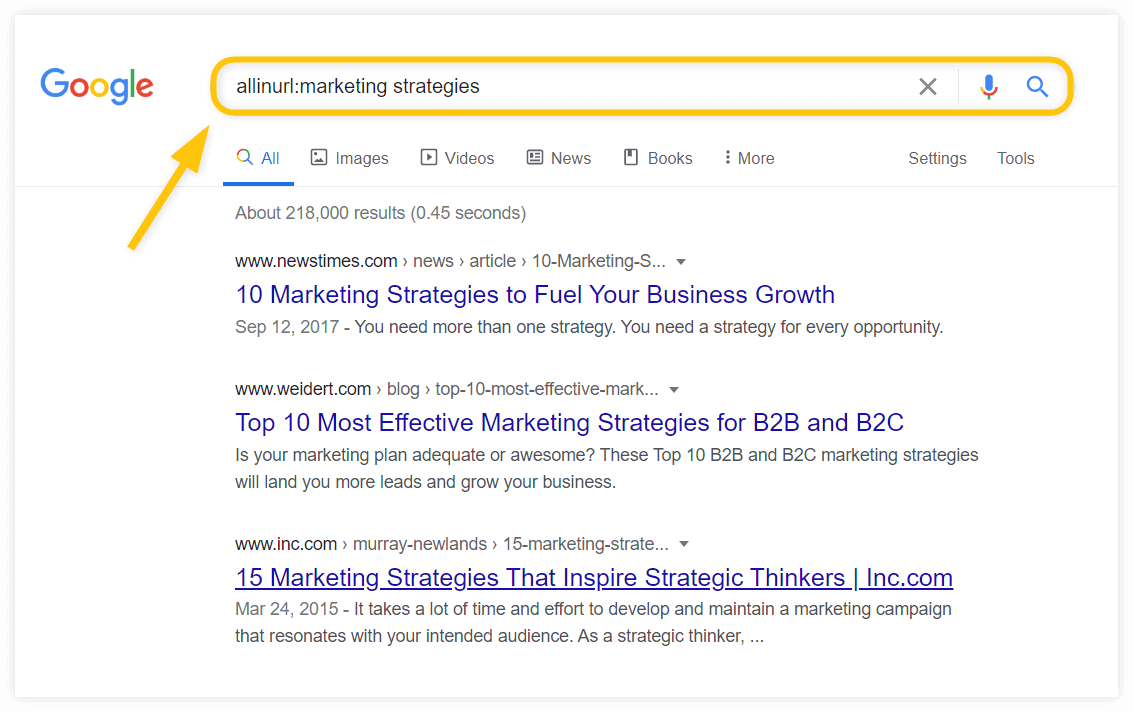What is Prospect Research
Prospect research is the process of finding and analyzing target markets for marketing, public relations, advertising, or sales purposes. Also known as market research, prospecting is the act of identifying potential customers to generate leads and convert them into profitable targets.
It is the first step to everything and the key to a successful business. Without it, you are just guessing where to start your marketing, public relations, advertising, or sales campaign.

(Image Source: Ubico)
9 Benefits of Prospect Research for Your Business
Wondering what benefits researching prospects can bring your way? Here are some of its perks:
1. Start and develop relationships
When you research prospects, you’re actually developing relationships with them. You’re not just selling to them, you’re constantly building a relationship with each one of your prospects. These relationships will eventually lead to sales down the road when they have established trust in your company and what it has to offer.
2. Generate leads
By researching prospects, you’ll be able to identify potential leads. These leads will then be able to take the next step in your buying process, like requesting more information about a service/product or registering for an event you’re hosting.
3. Help with marketing initiatives
Marketing is all about reaching out and talking to people – so research prospects now! By researching them, it’ll become easier to figure out how to reach them with your message, what they’re interested in, and where they might be.
4. Estimate ask amounts
Yes, there’s a way to calculate the potential value of prospective customers. This is done by researching what they are currently spending on products and services in your industry that offers similar benefits to yours.
5. Develop selling strategies
Prospect research can also be used when it comes time to sell them! By knowing more about their needs, it’ll be easier to generate a solution tailored for them.
6. Increase gifts from existing donors
When you do research, and donors know that their information is being stored safely and used responsibly, they’ll be more willing to share it. This will allow you to create a better experience for them in the future by knowing what might interest or excite them!
7. Identify potential board members and organization champions
Donors are an excellent resource for board members. They will be the people with the best insight into what you’re doing, and they’ll have a vested interest in seeing your organization succeed!
8. Uncover hidden donors
Donors won’t always be in your database, and that’s why you need to do some prospect research. Look for them through social media or other methods of communication!
9. Segment donors into groups
Knowing what donors are looking for – in terms of timing, amount, location, etc. – will help you tailor your message to them effectively!

(Image Source: Nutshell)
Who Can Benefit from Prospect Research
The following individuals and groups can benefit from prospect research:
Nonprofit organizations and NGOs
They often use prospect research to keep their supporters engaged and up-to-date on new campaigns.
Organizations also use this type of research for donor acquisition, or when seeking a grant from an organization that is unfamiliar with them. This can help the organization tailor its message, so it’s more likely to resonate with the potential funder.
Partnership managers
Through donor research, they can identify their prospects and vendors, as well as identify potential partners.
Board members
They can better understand the organization’s communications needs to be more effective advisors for fundraising staff.

Development staff
It can help development staff to identify and prioritize prospects, as well as determine what messages will resonate the most with them.
Donors
It can help donors to understand their own interests and needs so that they are more likely to give a larger gift.
ABM strategists
Prospect research can help to identify which prospects are most likely to make a big gift or grant and allow them to focus their time on the right people.
Financial managers
It provides valuable information about how donors typically give, what motivates them financially, and where they come from so that staff can develop an appropriate plan for stewardship.
End-of-life planners
Prospect research can help to identify which prospects are most likely to have a large, legacy gift and prioritize them. It also provides information about the type of organizations they typically support with their giving so that staff knows how best to engage in relationship building.
Outside agency partners/fundraising counsel
Prospect research can help to identify which prospects are most likely to give and prioritize them in collaboration with outside agencies.
Endowment staff
While not as important a role for endowments, prospect research is still helpful for identifying large donors who might be interested in funding an endowed chair or program area that fits their interests.
Marketing Department
The marketing department uses prospect research to decide which prospects should be on mailing lists, where fundraising appeals will be sent, and how best to engage with them.
Development team
The development team needs to know what prospects might be interested in a particular major gift program, for example, so they can develop the proper messaging and solicitation strategy. It also aids communications with potential donors who are already on our list of supporters.
Social Media
One of the most important things for any organization is to use social media effectively, but it can be difficult to know what will resonate with others when you’re not sure about their interests. Prospect research helps us tailor content so that it is more likely to attract their attention on social media.
Listservs
The listserv members are often our closest supporters, and prospect research helps us communicate with them in a way that will be most helpful for them personally. Prospect research should also include an analysis of how the list member ranked your organization when you were soliciting their support.
16 Prospect Research Tools You Can Use
Many tools can help with prospect research, some of which are free and others that cost money. The following is a list of 16 such tools:
1. LeadFuze
LeadFuze incorporates pretty much all the data from the 15 prospect research tools above. This one-stop approach gives sales reps and business owners a more comprehensive view of their leads.
If you need help finding new prospects, then this can be the answer!
LeadFuze is a research company that specializes in prospecting and data mining. It provides its clients with the most up-to-date information on their target audience, so they can make better decisions about how to grow their business.
Their team of experts will work closely with you to find out what your needs are and then create custom solutions for you.
You’ll never have to worry about wasting time or money again! With LeadFuze, it’ll take care of all the hard work for you – from researching your target audience to providing them with the best possible customer experience.
It doesn’t matter if it’s one lead or 10 leads – this tool will get it done right away! What’s even better is they offer free consultations too!
This is how you can use LeadFuze to improve your prospect research:
- Researching leads by finding their company’s ad spend, technology being used, and recent news about the brand
- Identifying prospects by finding their social media accounts
- Discovering potential leads by finding recent job postings at the company
- Eliminating bad prospects with LeadFuze’s lead scoring system

All of this can be done in just a few minutes using LeadFuze. Try it for free today!
2. Directories
These are websites that contain lists of companies based on a particular industry, sub-category, or other search criteria.
Directories can help prospect researchers identify target companies for research.
For example, you can find local businesses on Yelp, startups on AngelList, and venture-backed companies on CrunchBase.
These directories are great because they’ve done all the hunting and organization of potential prospects for you. You can even sort and filter the results based on your ideal customer profile. How you use the platform to prospect will depend on the nuances of your market and your ideal customer.
You’ll have to do your research, dig, and learn about each directory to figure out how to mine the data. Some platforms, like CrunchBase, have a paid option that allows you greater visibility and functionality when searching.

(Image Source: UI Garage)
3. Social media
This is another great resource for prospect research. Use hashtags to find local communities, relevant Twitter chats, and more.
This information can be a goldmine of leads if you know how to use it!
The market you’re in, and the person you’re targeting will determine where you should look.
For instance, if you’re in B2C, start with Facebook, Instagram, and Twitter. If you’re in B2B, begin with LinkedIn. If you can afford it, LinkedIn Sales Navigator is a must. It has a ton of great features and lets you keep your LinkedIn prospecting organized.
You can use social media to figure out what’s going on in your prospects head:
- Check out their random thoughts or musings on Twitter
- Read an article that they wrote or shared on LinkedIn
- See what’s happening in their personal life on Facebook
4. Technology lookup
You can use BuiltWith to find what technology your prospects are using
This is a great way to find out if they’re on the latest and greatest or still stuck in 2012.
If you see that they’re using outdated software, it could be an opportunity for you to offer them something better!
You can also try Pingdom Tools as well – this is a great tool for checking websites.
These are just a few of the ways you can use technology to do research on your prospects and find out what they’re up to online.
5. Company financial statements and quarterly earnings calls
You can use sites like MarketWatch to find the latest financial statements and earnings calls for your prospects.
This is a great way of finding out how they’re performing, what their goals are, and if anything is happening in the company that could affect them. You’ll be able to get useful information about things like:
- their general business plans
- marketing strategy and rates
- development trends in their industry, including what new technologies they’re using.
- new partnerships that are forming or breaking up with other companies in the market (this is a great way to verify if there’s anything you need to be aware of)
If you’re looking for information about your prospects that’s not in the public domain, you can always contact them or their employees to find out more.
You can also use MarketWatch. It offers a huge amount of data on companies and stocks, including recent financial statements and earnings calls. You’ll be able to get useful information about things like general business plans, marketing strategy, and rates, development trends in their industry (including new technologies they’re using), as well as news related to the company.
6. Company PR and press releases
These are also great sources of information. It’s often free, and you can find links to the documents on their website or in Google search results
In some cases, company press releases are more detailed than what is available from third-party sources like MarketWatch, especially when it comes to insider commentary about performance and future outlook. You’ll need professional-level access to some company press releases, but in other cases, they’re free and available for all investors.
7. Blogs
Blogs are a decent place to find information about companies, and you can often track down the author if they have their email listed on the site
If an article has been published more than a year or two ago, it’s still worth checking because older articles might be referring to trends that were happening at the time.
8. Job boards
Job boards are excellent for collecting information on companies because they aggregate job postings, which means you can see what the company is looking for and how many people are currently employed there.
If a company is looking to hire, then that means they’re growing. But if the positions are just administration or sales-related roles, it might not be worth investing in their stock because the growth will most likely come from acquisitions and mergers rather than organic growth.
9. Podcasts
A podcast can help with prospect research by providing information on things like the company’s goals, new products they’ve released, and insights into their industry in general.
It can help you get in the head of your prospect, so you can better understand their motivations and where they’re going in the future.
Podcasts are a great way to learn about companies because they provide information that’s usually more detailed than what you’ll find on websites or social media profiles.
10. Google (with search operators)
Google allows you to search for information using several operators that can help refine your searches.
Some examples are:
- “site:” operator helps narrow the results to sites related to your topic – e.g. site:LinkedIn, which would only return LinkedIn pages in the search results
- “link:” operator is useful for finding pages that link to your topic – e.g. link:LinkedIn, which would only return LinkedIn-related sites in the search results
- “filetype:” operator helps you find PDFs, Word Documents, or other file types related to your research subject (e.g., filetype:pdf)
- “intitle:” operator helps find a word or phrase within the title of the web page (e.g., intitle:LinkedIn)
- “allinanchor:” finds web pages that have all the words in links to them on their respective pages
- “define” will give you definitions for keywords from Dictionary.com
- “info” will provide information about the site – e.g., when it was created, age of domain registration
- “linkdomain:” operator is useful for finding sites that are related to your topic (e.g., linkdomain:LinkedIn)
- “siteinfo” helps you find out how popular a site is with Google PageRank
- “search” operator helps you find documents that may be related to your research terms
- “inurl:” is useful for finding web pages that contain a specific string of text in the URL (e.g., inurl:LinkedIn

(Image Source: Mangools)
11. Buzzsumo
Buzzsumo lets you find the most popular articles on specific topics over a certain period. It’s great for content ideas, and to see how much attention an article is getting.
You can type in a search term, and it’ll provide you information such as how many shares an article has, what social networks it’s popular on, and the number of links to the page.
Buzzsumo is not perfect though – you should always take into account when a story was published before drawing any conclusions based solely on the buzz in numbers. For example, if someone tweets about an article from two years ago, and it has a lot of shares, that doesn’t necessarily mean the article is still relevant.
12. Third-party research
When B2B stakeholders need to make buying decisions, they often incorporate credible research into their process.
According to Demand Gen Report’s 2018 Content Preferences Survey, 78% of B2B buyers say that they place more emphasis on how trustworthy the source of information is and 65% say that they prefer content from credible influencers.
Global research and advisory firms like Gartner and Forrester can be a great way to get a detailed and technical look at companies you are prospecting.
Typically, the best research is behind a paywall, but you can always get some pretty good info in exchange for your email address from a vendor that is releasing a report they are included in or from the website of the research firm itself.
13. Google alerts
Google alerts are helpful with prospect research. It’s like turning Google into your personal research assistant.
This is also a good way to monitor competitors. You can set alerts for specific topics, and you’ll receive an email whenever Google updates the results of your search, which will show up in your inbox every day or week.
If you are not already using this tool, I recommend setting up daily alerts for similar keywords that would be pertinent to your business.
If you set up alerts for topics related to your industry, during a day or week Google may alert you that they have published new information about keywords in which you’re interested–all without doing any research yourself!
Google Alerts also saves time by making it easy for you to monitor changes in critical information.
14. Hunter.io
Hunter is a great tool for researching prospects, and it’s different from Google Alerts because you can set up alerts to receive emails about specific people in your network on LinkedIn–and not just what they’re posting on the social media site itself.
This means that if there are any new connections or posts related to them, or if they update their positions on LinkedIn, you’ll get an email notification.
Hunter also helps with research by providing easy access to a person’s profile and other social media accounts that may be relevant for your business.
15. Reddit
Reddit.com is a social news aggregation site that has many communities and groups dedicated to specific interests or topics, which means you can find information on virtually any topic through Reddit’s search engine.
If there are articles related to your subject of interest posted in the past week, then they’ll show up as links on the first page of your search.
You can also subscribe to specific Subreddits, which are just sub-communities within the site, and get articles that have been submitted by other members of that community or group.
Additionally, you’ll see all submissions on a Subreddit through “hot,” new,” “rising” or “controversial.” This is a great way to find out what’s most popular in that community.
16. Historical web searches
Historical web search tools like Wayback Machine and archive.is can help you find a previous version of the same website.
You can typically find what you’re looking for by searching through archived versions of the site, and then clicking on any links to external sites with information related to your subject. Note that these tools are not foolproof–sometimes sites may be re-purposed or changed without leaving an archive behind.
Conclusion
Prospect research is the process of finding and analyzing target markets for marketing, public relations, advertising, or sales purposes. Neglecting it can lead to wasted time, money, and resources.
Want to help contribute to future articles? Have data-backed and tactical advice to share? I’d love to hear from you!
We have over 60,000 monthly readers that would love to see it! Contact us and let's discuss your ideas!


